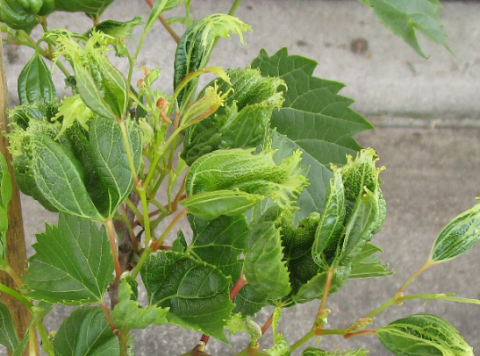What Will Future Ag Health Studies Say?
March 6, 2019
Don’t wait for a study to tell you to work more safely around chemicals. Be proactive and protect yourself with proper personal protective equipment (PPE).
Applying Pesticides Safely
January 7, 2019
The world of pesticides is continually evolving. In spite of this, there are many basic principles that commercial and noncommercial applicators should always follow when handling or using pesticides.
Sensitivity of Grape and Tomato to Micro-rates of Dicamba-Based Herbicides
May 3, 2018
Researchers report on a study to confirm the level of sensitivity of grapes and tomatoes to 1/10 and 1/100 of the label rate of dicamba. The studies were conducted with pot-grown grape and tomato plants during the summers of 2016 and 2017 at the Haskell Ag Lab.
Proper PPE Prevents Pesticide Exposure
April 25, 2018
Besides using common sense, perhaps an applicator’s most important protection is wearing the appropriate personal protective equipment (PPE). Here's an illustrated guide as to what to wear and exposure risk for various body areas.
Kruger to Present National Spray Drift Webinar
February 27, 2018
Nebraska Extension Weed Scientist and Application Technology Specialist Greg Kruger will be presenting an Environmental Protection Agency (EPA) national webinar March 15 on "Strategies for Managing Pesticide Spray Drift." The webinar is tailored to growers and pesticide applicators.
National Pesticide Safety Education Month
February 8, 2018
February is National Pesticide Safety Education Month, an initiative of the National Stakeholder Team for Pesticide Safety Education Program (PSEP) Funding. Its member goals are pesticide safety during transport, storage, application, and disposal.
Chemical-Resistant Gloves May Help Prevent Parkinson's
March 14, 2017
One key to pesticide safety is literally in the palm of your hand: wearing proper gloves.
Winter Pesticide Storage
September 29, 2016
Check out these recommendations for storing away pesticides and your sprayer to avoid product loss and equipment damage over winter.






